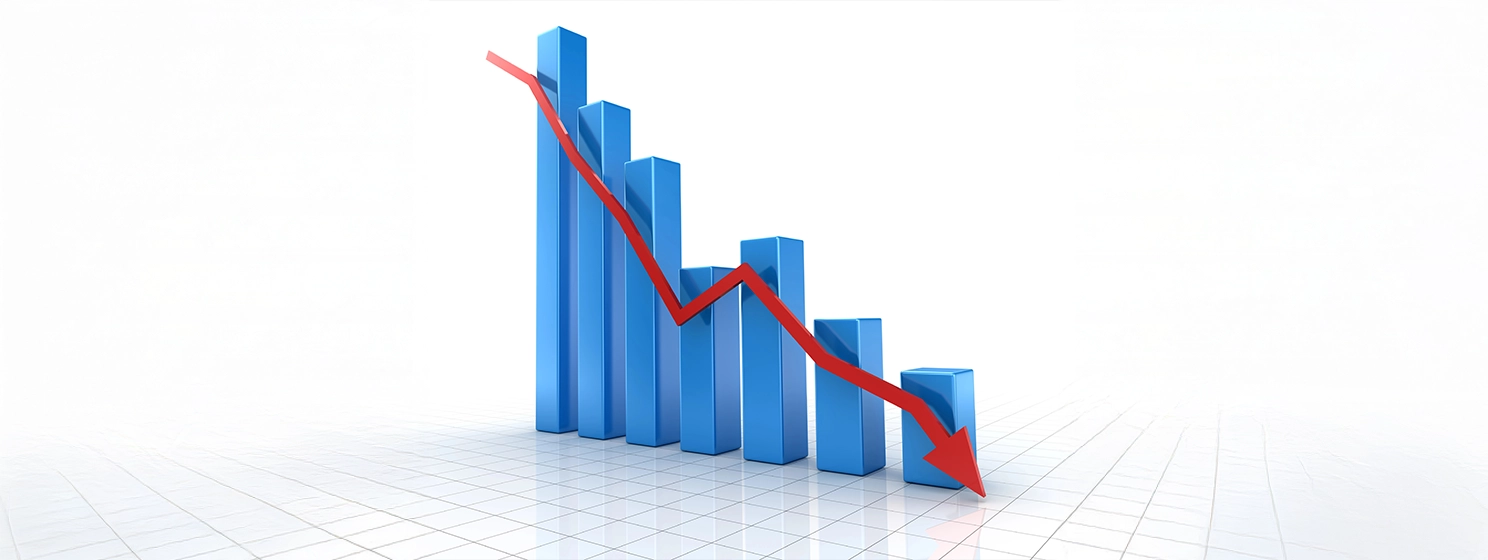|
Getting your Trinity Audio player ready...
|
With the Philippines reeling from revelations of billions of pesos unaccounted for in “ghost projects” within the Department of Public Works and Highways (DPWH), many Filipinos are asking the same question: How did we get here? How could such vast sums, funded by taxpayers, slip through the cracks of government oversight?
- From opacity to accountability
- Multi-sector guardrails
- Testing blockchain at scale
- Shared validation, shared trust
- Curing a rotten system
On September 30, a bold step was taken to confront the problem head-on. The DPWH signed a memorandum of agreement with the Blockchain Council of the Philippines (BCP), with support from the Department of Information and Communications Technology (DICT), to launch Integrity Chain—a blockchain-based initiative designed to track government projects from budget release to completion. The goal: to make every peso spent on public infrastructure visible, verifiable, and tamper-proof.
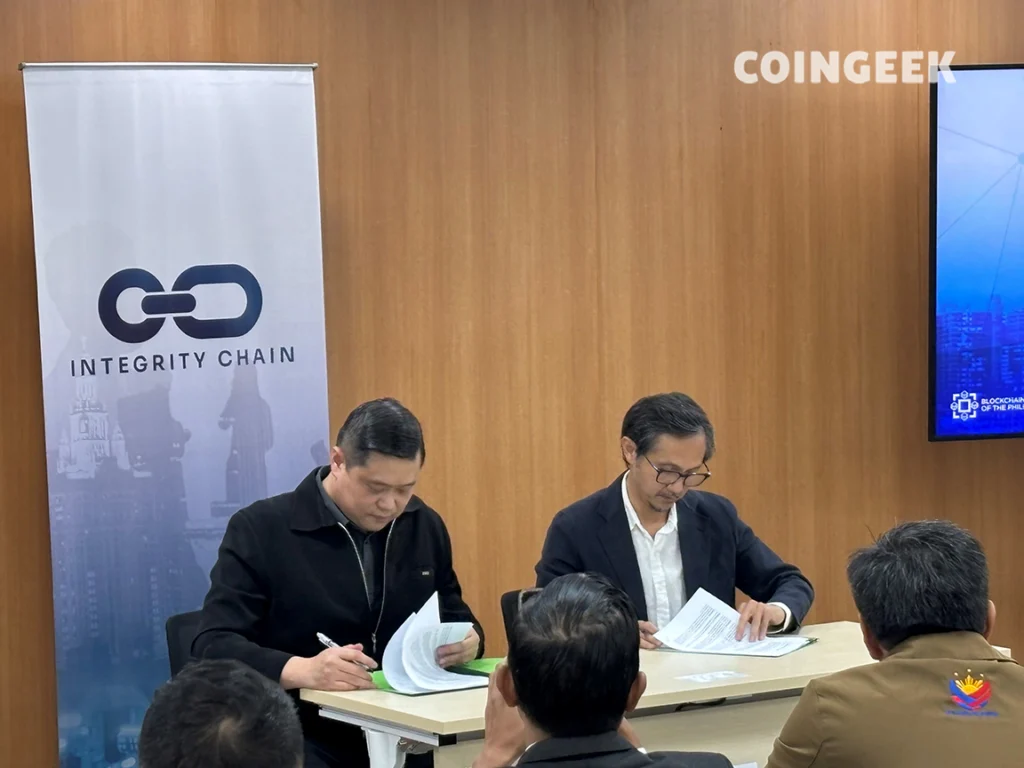
“Integrity Chain ensures that every contract is recorded securely, verified independently, and visible to the public,” explained Donald Lim, founding president of the BCP. “It turns infrastructure data into a living, verifiable public record, co-owned by society, as every public record should be. This is urgent because public trust in government is eroding.”
A department at the breaking point
For DPWH Secretary Vince Dizon, the project can’t come soon enough. Known for his candor, Dizon admitted the magnitude of the challenge he inherited.
“It’s really unbelievable to me how corrupt this institution has become,” Dizon said. “The decay stems from a total lack of transparency. DPWH is a very decentralized organization; 300 district offices, 20,000 to 25,000 projects every year and no monitoring. Nobody has eyes on the process. They are their own little kingdoms, and they are the kings. But hopefully with this [blockchain], that will change.”
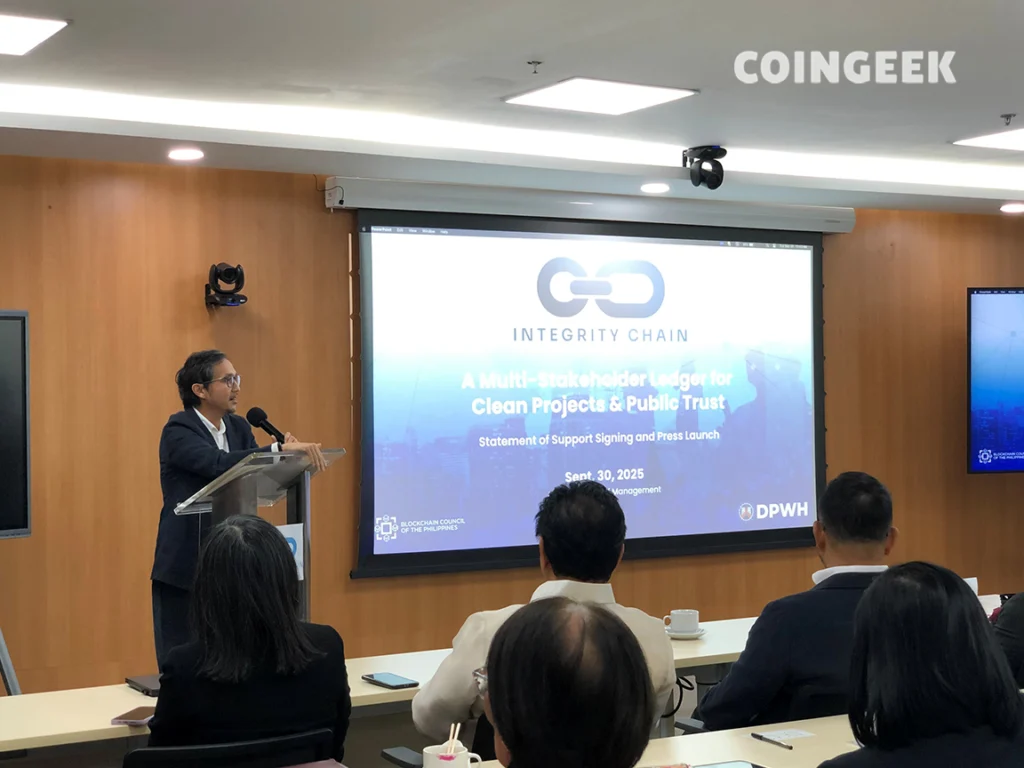
Dizon stressed that blockchain‘s strength lies in its design.
“Simply put, blockchain provides a lot of eyes on something. There are multiple eyes, and they don’t know each other. They can’t collude.”
How the system will work
The Integrity Chain will begin with a proof of concept, logging DPWH’s foreign-assisted projects from budget release to completion. Every transaction will be timestamped and recorded on a decentralized ledger. Validators will come not only from government but also from trade groups, NGOs, academe, and media; creating a multi-sector watchdog network.
Funding will come from an independent blind trust to shield the project from political influence.
“The only way this will fail,” Lim warned, “is if those who are here today later refuse to participate. Everyone must play an active role.”
DICT Secretary Henry Aguda, who helped push the initiative, underscored the administration’s urgency.
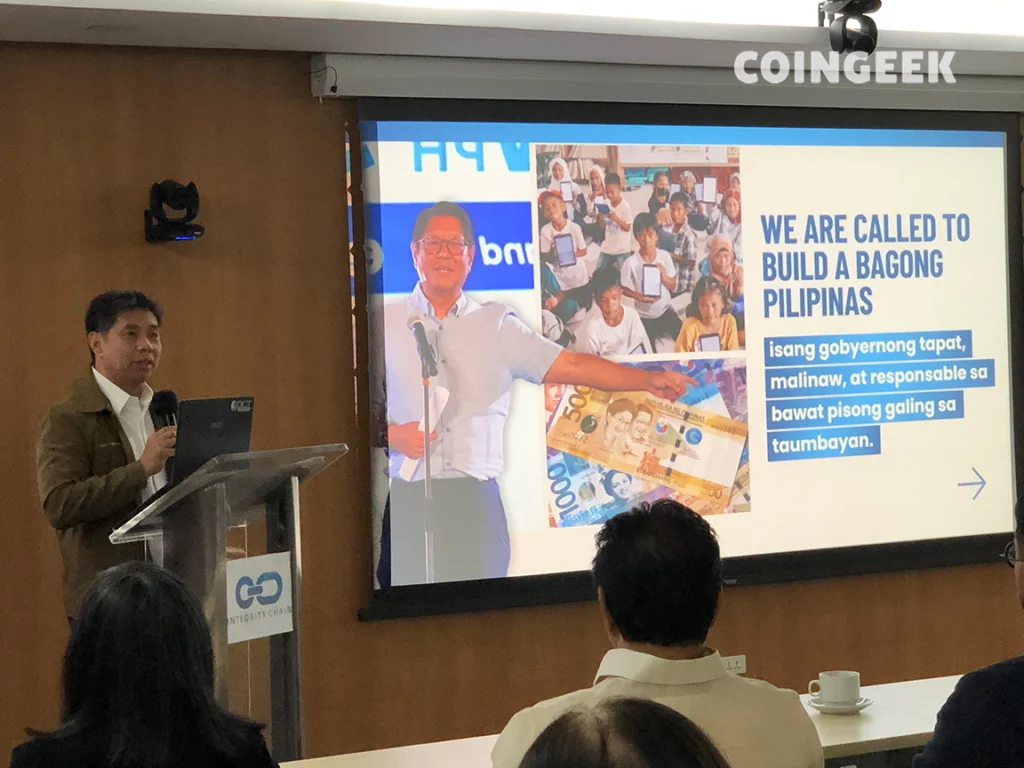
“President Marcos mandated us to use technology and to put a stop to corruption. Enough excuses, enough corruption. We want a government that is truthful, clear, and responsible. Through blockchain and artificial intelligence, every contract, every disbursement, every project is imprinted. You cannot erase or change it. Every entry is timestamped, traceable, and open for validation by civil society. This is true transparency.”
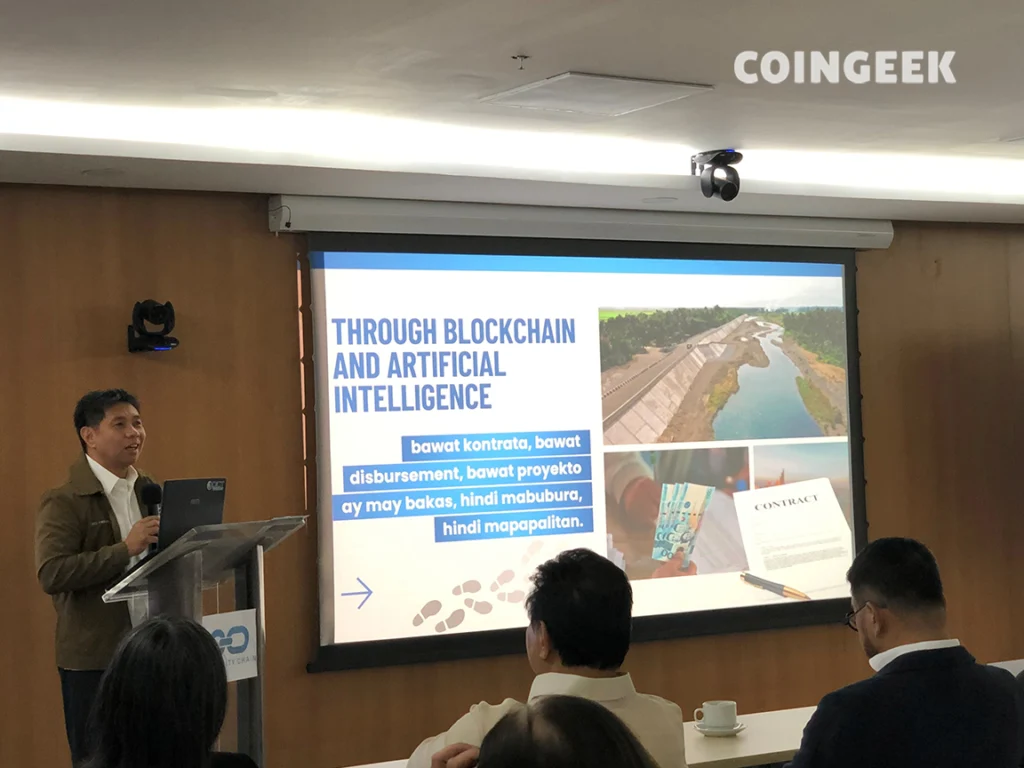
The technology behind the promise
But what blockchain is powering this? The pilot is being built on BayaniChain, a homegrown platform already in use by the Department of Budget and Management (DBM) for select budget monitoring projects. BayaniChain itself runs on Polygon, a Layer-2 scaling solution for Ethereum.
The question, however, is one of scale. If blockchain were rolled out across every Philippine government agency, covering millions of daily transactions, can the infrastructure handle it? Polygon describes its network as designed for scalability, but government-grade adoption will test its limits.
“There has to be a minimum viable product first,” Lim emphasized. “We will experiment with this before we push it forward.”
From pilot to nationwide reform
Integrity Chain isn’t the first blockchain experiment in Philippine governance, but its design sets it apart. Instead of relying solely on government validators, the system invites independent validators from multiple sectors to ensure no single party can manipulate records.
For reform advocates, the stakes couldn’t be higher.
“This is what the whole government needs, not just DPWH,” Dizon said. “From the budget process to procurement, to awarding contracts, to project implementation and payment; everyone should be watching.”
Aguda envisions a future in which every government transaction, even votes, is recorded on the blockchain.
“Together we can break the chains of corruption,” he declared. “We can build a Bagong Pilipinas where every peso is protected, every project is accountable, and every Filipino is part of the change.”
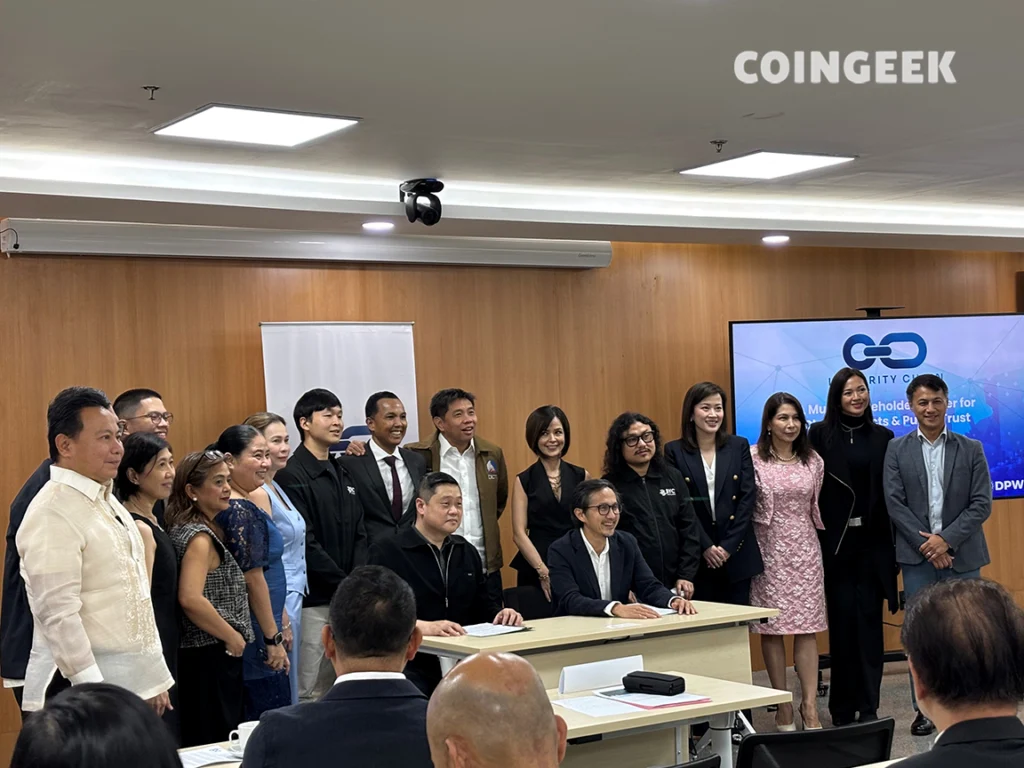
The road ahead
Skeptics caution that technology alone cannot solve corruption. Blockchain can create a public, immutable record, but it will require relentless participation from citizens, validators, and institutions to ensure data is entered accurately and monitored continuously.
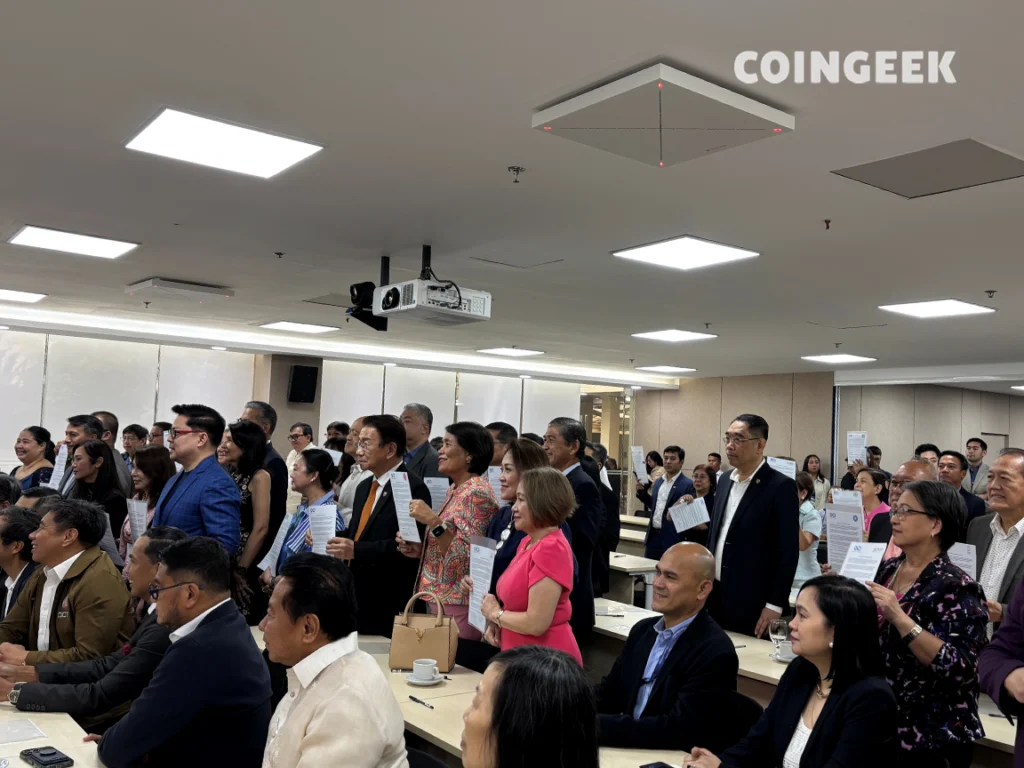
Still, the launch of Integrity Chain marks a turning point. For a nation weary of scandal, it signals a willingness to try something new and to shine a light on a system long shrouded in secrecy.
As Dizon put it, “The brazenness comes from the simple fact that nobody has eyes on these people. Blockchain offers a real opportunity to change that.”
Watch: Philippines is ready to implement blockchain

 12-24-2025
12-24-2025 

